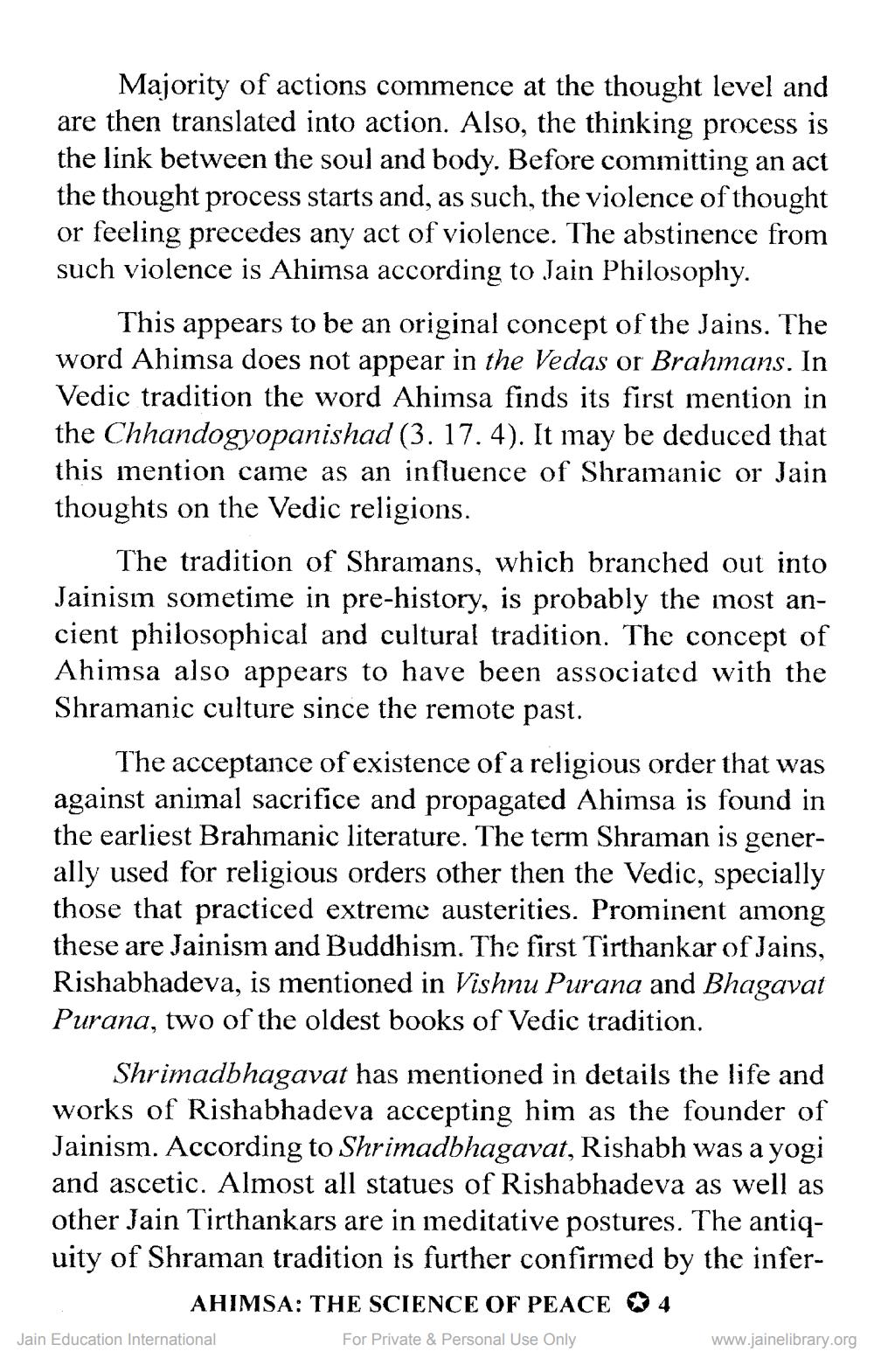________________
Majority of actions commence at the thought level and are then translated into action. Also, the thinking process is the link between the soul and body. Before committing an act the thought process starts and, as such, the violence of thought or feeling precedes any act of violence. The abstinence from such violence is Ahimsa according to Jain Philosophy.
This appears to be an original concept of the Jains. The word Ahimsa does not appear in the Vedas or Brahmans. In Vedic tradition the word Ahimsa finds its first mention in the Chhandogyopanishad (3. 17. 4). It may be deduced that this mention came as an influence of Shramanic or Jain thoughts on the Vedic religions.
The tradition of Shramans, which branched out into Jainism sometime in pre-history, is probably the most ancient philosophical and cultural tradition. The concept of Ahimsa also appears to have been associated with the Shramanic culture since the remote past.
The acceptance of existence of a religious order that was against animal sacrifice and propagated Ahimsa is found in the earliest Brahmanic literature. The term Shraman is generally used for religious orders other then the Vedic, specially those that practiced extreme austerities. Prominent among these are Jainism and Buddhism. The first Tirthankar of Jains, Rishabhadeva, is mentioned in Vishnu Purana and Bhagavat Purana, two of the oldest books of Vedic tradition.
Shrimadbhagavat has mentioned in details the life and works of Rishabhadeva accepting him as the founder of Jainism. According to Shrimadbhagavat, Rishabh was a yogi and ascetic. Almost all statues of Rishabhadeva as well as other Jain Tirthankars are in meditative postures. The antiquity of Shraman tradition is further confirmed by the infer
AHIMSA: THE SCIENCE OF PEACE 4 For Private & Personal Use Only
Jain Education International
www.jainelibrary.org




